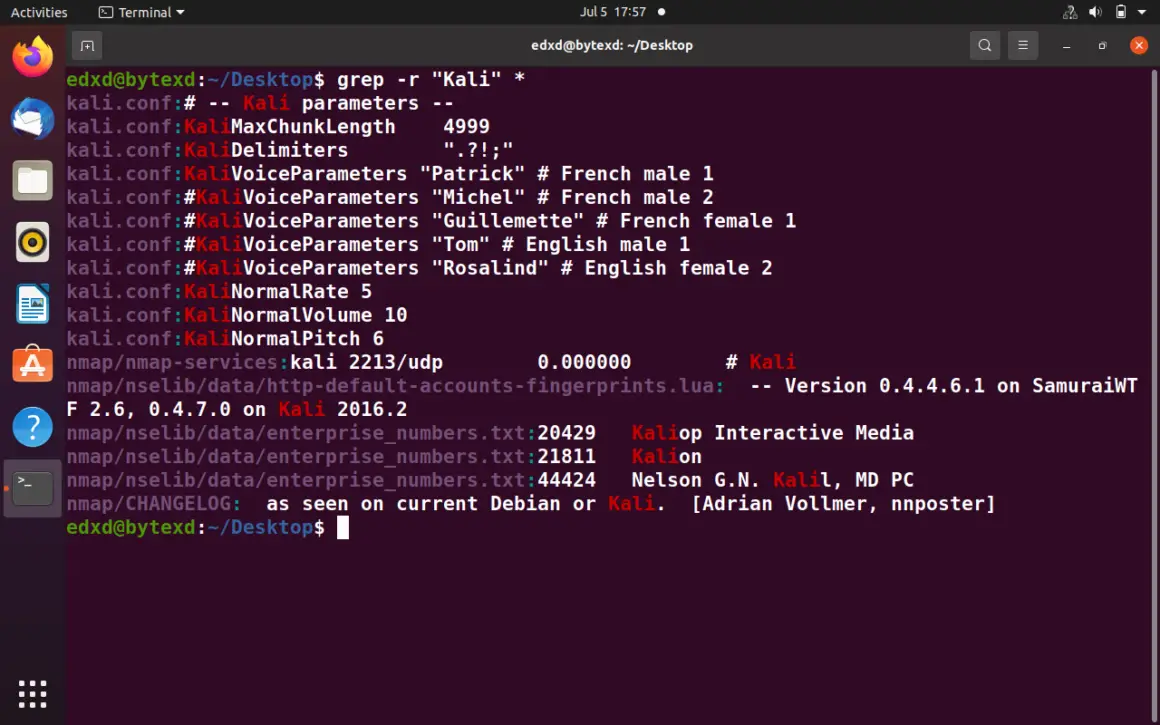

Modifiers to the grep command across multiple files grep exclude directories Instead, navigate to the root of where would be useful to search, such as /home or /usr or /etc and then run the grep command with the recursive search flag (-r). This is not recommended as you would get the results from folders that aren’t relevant to your search, such as your configuration settings. To search all files, you can run the commands identified above but from the root of your system. Alternatively, to show the log lines that match after the keyword, use the -A parameter.

grep -B 4 'keyword' /path/to/file.log The -B 4 tells grep to also show the 4 lines before the match. Note that this could also be used to search all files with the same name but different extensions by changing where the wildcard character appears. To also show you the lines before your matches, you can add -B to your grep. This page was generated by GitHub Pages.Which searchers all files in the current directory with the given file extension. Training-modules is maintained by hbctraining. Could you please try the following and let me know if this helps.
#GRAB GREP PATTERN AFTER A SYMBOL LICENSE#
These are open access materials distributed under the terms of the Creative Commons Attribution license (CC BY 4.0), which permits unrestricted use, distribution, and reproduction in any medium, provided the original author and source are credited. This lesson has been developed by members of the teaching team at the Harvard Chan Bioinformatics Core (HBC). What we mean by this is that if you were to have a variable named at that holds AT:ġ) Use grep to find all matches in catch.txt that start with “B” and have a “T” anywhere in the string after the “B”.Ģ) Use grep to find all matches in catch.txt that don’t start with “C” and don’t end with “H”ģ) Use grep to find all matches in catch.txt that have atleast two “A”s in them Additional Resources Notably, bash variables within single-quotations are NOT expanded. However, within bash, single-quotation marks ( ') are intepreted literally, meaning that the expression within the quotation marks will be interpreted by bash EXACTLY the way it is written. The big advantage of using quotation marks, single or double, when using grep is that it allows you to use search expressions with whitespace in them. So grep doesn’t ever “see” quotation marks, but rather quotation marks are interpreted by bash first and then the result is passed to grep. As a result, if your search term doesn’t have whitespace it doesn’t matter if you put quotations, but if it does, then it won’t behave the way you’d like it to behave. If you are using grep to search and have whitespace (space or tabs) in your search, grep will treat the expression before the whitespace as the search term and the expression after the whitespace(s) as a file(s). Let’s briefly discuss the differences: No quotation However, if you would like to use grep to do certain types of searches, it is better or safer to wrap your search term in quotations, and likely double quotations. When using grep it is usually not required to put your search term in quotes.

If you want to make it a habit to always use the -E option when using regular expressions in grep it is a bit more safe. We won’t use too many of these types of regular expressions and we will point them out when we need them. There is a -E option when using grep that allows the user to use what is considered “extended regular expressons”. Bm stands for m lines 'before' the match. There are two principles that we should discuss more, the -E option and the use of quotation marks. Use grep with the parameters -A and -B to indicate the number a of lines After and Before you want to print around your pattern: grep -A1 -B1 yourpattern file An stands for n lines 'after' the match. These differences are not exhaustive, but they will be helpful in exploring how regular expressions are implemented in grep. When it finds a match in a line, it copies the line to standard output (by. In here, you can see that we have a variety of case differences and misspellings. grep searches the input files for lines containing a match to a given pattern list.


 0 kommentar(er)
0 kommentar(er)
